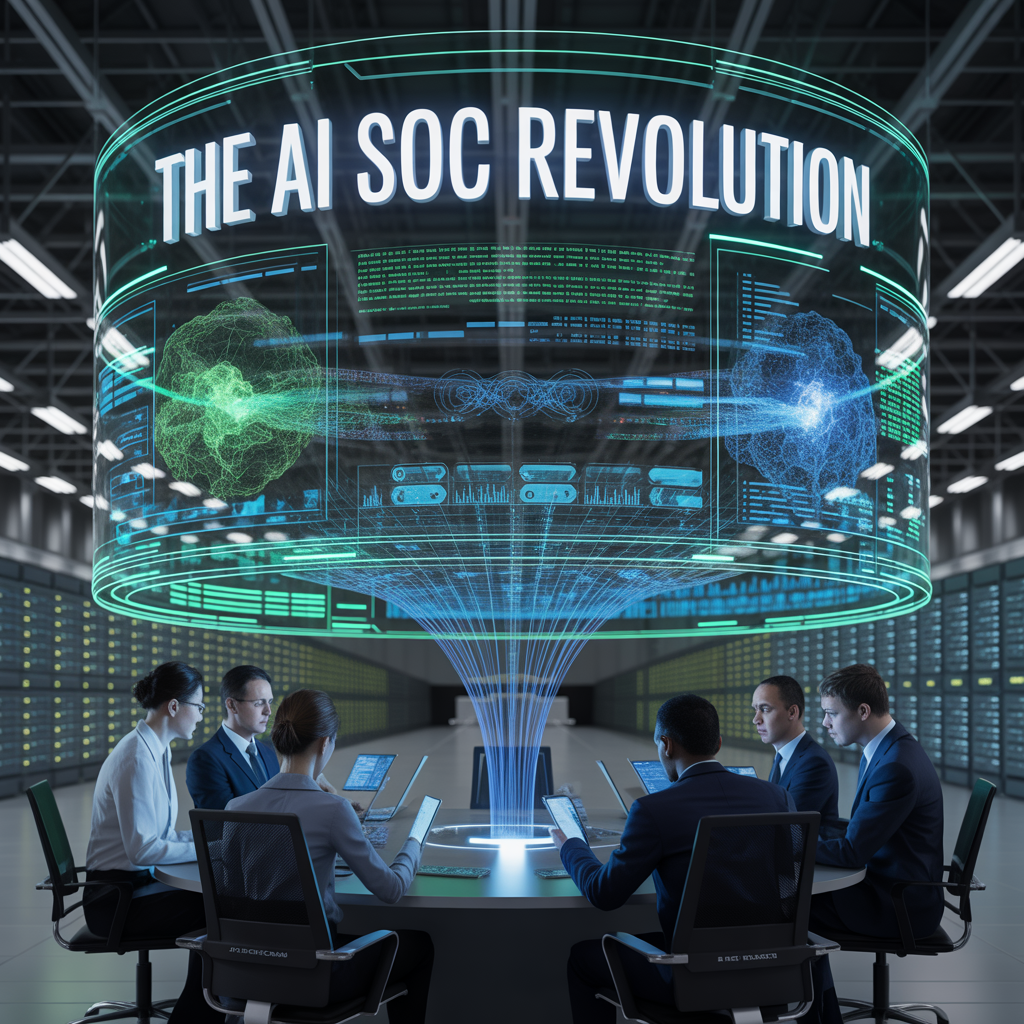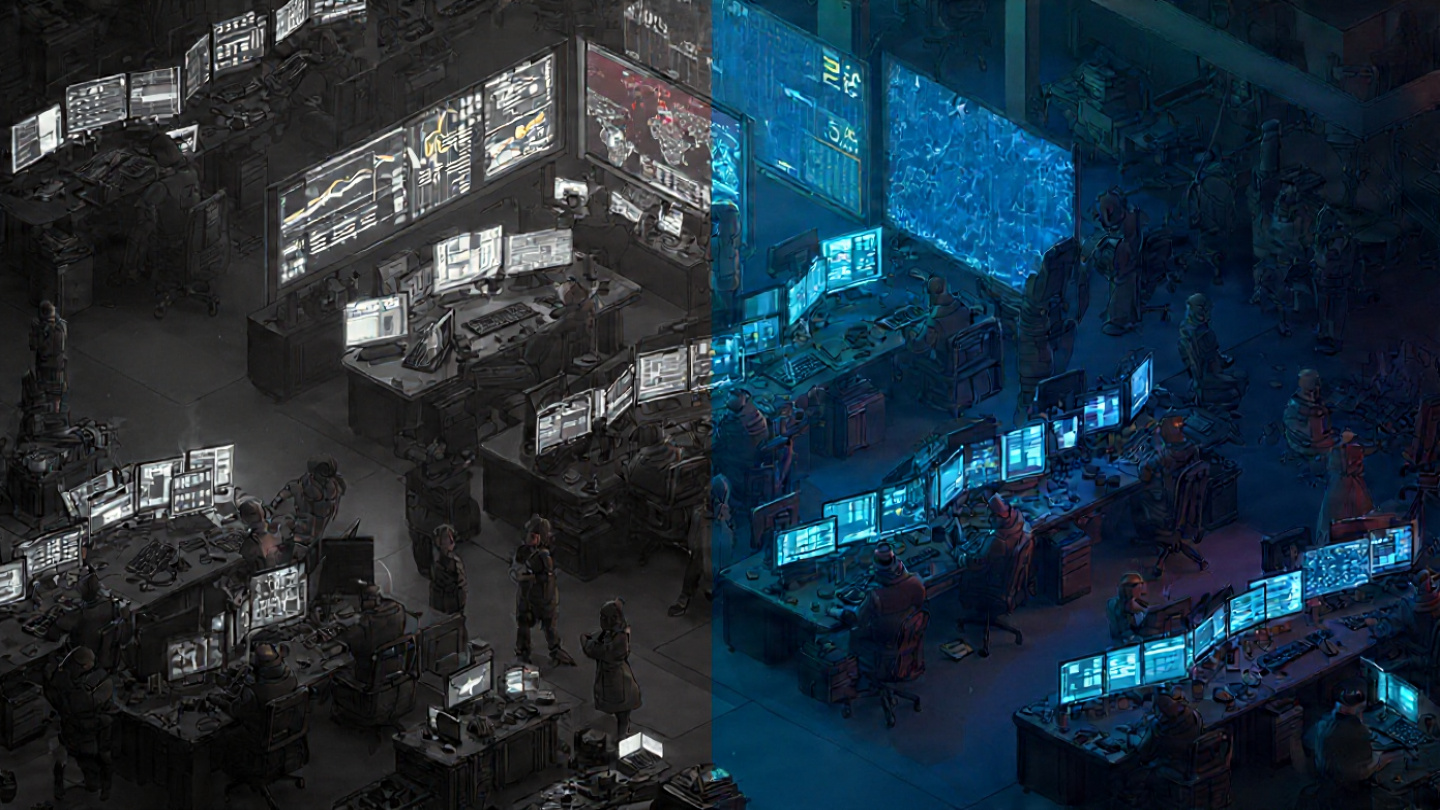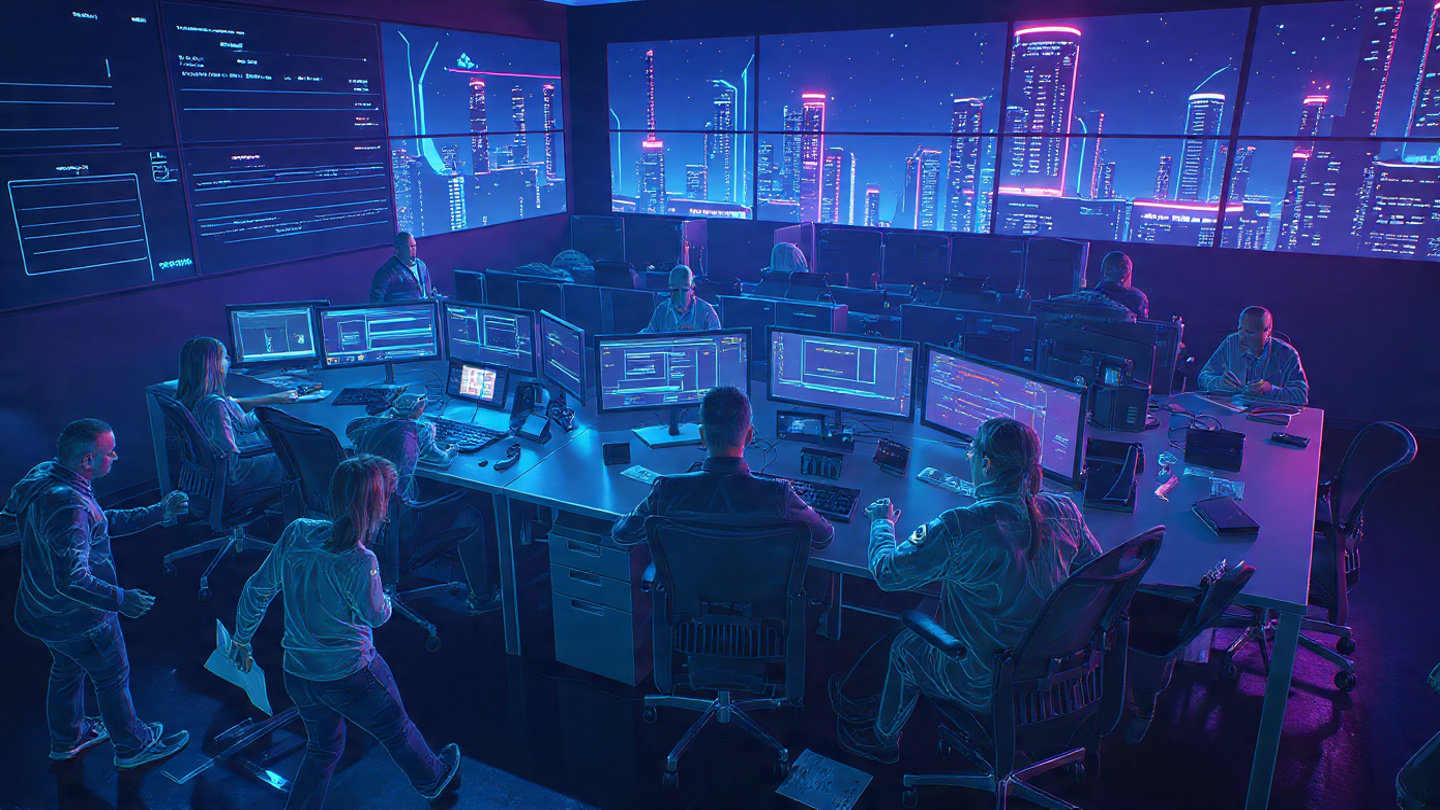After two decades defending networks and investigating threats, I've witnessed the transformation of cybersecurity from reactive patching to proactive hunting. Today, we stand at the threshold of the most significant evolution in Security Operations Centers since their inception: the rise of truly intelligent defense systems powered by artificial intelligence.
The Breaking Point of Traditional Security Operations
Traditional SOCs operate in a state of perpetual crisis. The numbers paint a stark picture: the average analyst confronts hundreds to thousands of alerts daily, investigating perhaps a single digit percentage of them on a good day. What we are facing isn't a data shortage or detection problem—it's a cognitive capacity crisis. Security operations teams face an 88% operational challenge rate due to staff shortages, while current technologies like EDR/XDR, SIEM, and SOAR create significant deployment and management costs.
The talent gap in the SOC compounds this challenge. Tier-2+ analysts represent the scarcest profiles in cybersecurity today, accounting for only a small fraction of cyber teams while handling the most critical activities in security operations. Organizations struggle with manual investigation processes that rely entirely on individual analyst knowledge and expertise. (Universal talent gap in cybersecurity hinders the ability to run investigations)
Sadly, I've watched brilliant analysts burn out trying to match the scale and sophistication of modern threats. The human brain, remarkable as it is, wasn't designed to correlate thousands of data points across multiple systems simultaneously while maintaining context over weeks or months. Traditional security operations have reached their cognitive limits. (Breaking the SOC Alert Fatigue Cycle: Why Speed Metrics Are Killing Quality)
The Rise of Intelligent Defense Systems
AI in SOCs represents more than tool enhancement—it's the emergence of systems that think, learn, and adapt. Unlike humans, AI doesn't experience fatigue, doesn't miss subtle patterns buried in noise, and doesn't have off days. More importantly, AI can process network flows, behavioral analytics, and threat intelligence simultaneously while maintaining perfect context across time.
The most effective approach in AI for SOC involves AI-powered, question-based investigation methods that emulate expert analysts' thought processes, using structured content to improve model response quality. This isn't about replacing human judgment—it's about amplifying human capabilities to superhuman levels. This is the only way to live up to the high volume and increasing threats we face today. (Revolutionizing cybersecurity investigations with expert questions and AI)
Real-world deployments of AI for SOC demonstrate transformative results. Organizations using advanced AI investigation platforms report reducing investigation time from days to minutes while ensuring consistent outcomes. These systems can detect Advanced Persistent Threats in minutes rather than days or months, correlating threat indicators across global infrastructure instantaneously. (Reality Check: Hype vs What Actually Works in AI for SOC)
Just like any other new technology adoption, there is a healthy dose of skepticism around the use of AI in the SOC. The skeptics raise valid concerns about AI accuracy. The difference between human and AI errors is scale and learning velocity. When AI makes a mistake, it learns from that error across every deployment simultaneously. When one AI SOC identifies a new attack pattern, that knowledge propagates to all connected systems immediately. This represents collective intelligence at an unprecedented scale. Presumably, human analysts also learn from mistakes and experiences, yet the knowledge acquired mostly remains limited to individuals or small teams.
Human-AI Partnership in Defense
Despite the ambitious sci-fi scripts we’ve all been exposed to growing up, the future of AI in security operations isn't human replacement—it's human augmentation. AI excels at pattern recognition, correlation, and processing massive datasets. Humans excel at strategic thinking, contextual judgment, and complex problem-solving. The most effective SOCs will leverage both capabilities symbiotically.
AI enables immediate scope and impact identification during investigations, allowing analysts to pull broader context from data sources in seconds rather than hours. This capability extends beyond centralized repositories to include specialized systems that previously required specific technical expertise.
Modern AI platforms address investigation bottlenecks by providing expert knowledge, processes, and tools that complement security operations teams, allowing analysts to review complete investigations and conduct bespoke inquiries to achieve expert outcomes. This democratization of expert knowledge transforms junior analysts into effective investigators while freeing senior analysts for strategic threat hunting and complex cases.
The operational impact is measurable. AI handles the noise—false positives, routine correlations, and basic triage—while humans focus on strategic decision-making, advanced threat hunting, and complex investigations requiring nuanced judgment. This division of labor maximizes both human creativity and AI processing power. This collaboration
The Adversarial AI Reality
The whole security industry worries about adversarial AI, and we should. The emergence of AI-powered attacks will create new challenges and will demand AI-powered defenses. The future of cybersecurity clearly isn't human versus AI—it's AI versus AI, with humans serving as strategic commanders directing intelligent defense systems.
This reality also drives the urgency for AI adoption in security operations. Attack AI will continue evolving, developing new techniques, and scaling offensive capabilities. Defense systems must match this evolution or risk obsolescence. Organizations that embrace AI SOC today position themselves to adapt as threats evolve.
The collective learning advantage becomes crucial in this context. As attack AI develops new methods, defense AI systems must share intelligence instantly across all deployments. This creates a global immune system where learning from one attack benefits all defenders simultaneously.
Why now? The Strategy AI for SOC Imperative
Hundreds of organizations have started their journey with AI for SOC. Organizations implementing intelligent defense systems today gain significant advantages: reduced mean time to detection, improved analyst productivity, and enhanced threat response capabilities. Similar to other fast-emerging technologies, AI for SOC is not perfect yet, but it is already extremely powerful. Those waiting for "perfect" AI solutions will find themselves defending against tomorrow's threats with yesterday's tools. We’ve experienced this self-harming hesitancy to adopt other security methods before, and we need to do better as an industry this time.
The majority of semi-mature to mature SOCs today have solid solutions for data ingestion, triage and prioritization (aka tier-1). While the solutions in these areas are not perfect and they can always be optimized, these are problems we’ve mostly addressed as an industry. The most impactful project a CISO can undertake in 2025 is supercharging tier-2 and tier-3 analysts through platforms that reduce technology-specific expertise requirements while enabling consistent, repeatable, auditable investigations. This transformation addresses the fundamental bottleneck in security operations: the shortage of skilled investigators.
The strategic benefits extend beyond operational efficiency. AI for SOC platforms create institutional knowledge from past investigations, build repeatable processes, and reduce dependence on individual analyst expertise. This organizational resilience becomes critical as threat landscapes evolve and personnel changes occur. (Context and intent for AI enable effective cyber investigations)
Conclusion: The Intelligent Defense Revolution is Here Today
We're witnessing the emergence of truly intelligent defense systems. AI for SOC isn't just about better tools—it's about fundamentally reimagining how we detect, investigate, and respond to threats. The convergence of machine learning, behavioral analytics, and human expertise creates capabilities that exceed what either could achieve alone.
The organizations that recognize this transformation and act decisively will be the ones still standing when the next wave of sophisticated threats emerges. The future of cybersecurity is artificially intelligent, and it's arriving faster than most realize.
The question isn't whether AI will transform security operations—it's whether your organization will lead or follow this transformation. In cybersecurity, that distinction often determines survival.
Book a demo today to see how Command Zero can help transform your SOC with AI.







